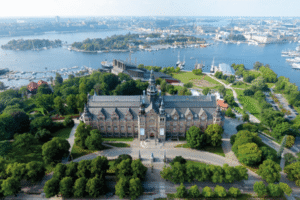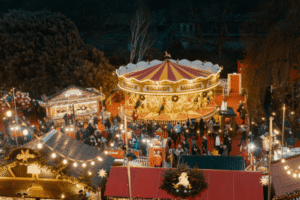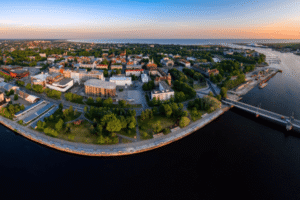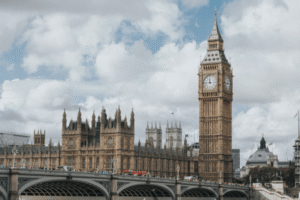Step inside a castle where kings plotted wars, love affairs unraveled, and priceless treasures have been locked away for centuries. Rosenborg Castle isn’t just another historic site, it’s Denmark’s royal time capsule, a place where the echoes of 400 years of monarchy still linger in the air.
Built in the early 1600s by King Christian IV, a man known for his extravagant taste, multiple castles, and some questionable financial decisions. Rosenborg was never meant to be a permanent royal residence. Yet, somehow, it became the keeper of Denmark’s most valuable possessions: the Crown Jewels, royal portraits, and a throne flanked by three silver lions (because why have one when you can have three?).
Today, it’s one of Copenhagen’s most visited landmarks, attracting history buffs, architecture lovers, and casual tourists looking to see something shinier than the Little Mermaid statue. But Rosenborg isn’t just about old stones and fancy furniture. This castle tells a story of power, ambition, and the occasional royal scandal. Want to know what’s inside? Let’s take a closer look.
Key Takeaways
- Rosenborg Castle is a 17th-century royal summer residence built by King Christian IV in Copenhagen.
- Famous for housing Denmark’s Crown Jewels and Royal Regalia in its basement vaults.
- Showcases Dutch Renaissance architecture and beautifully preserved interiors like the Knights’ Hall.
- The castle sits within King’s Garden, Denmark’s oldest royal garden, open to the public.
- Visitors can explore royal artifacts, historic portraits, and the iconic throne guarded by three silver lions.
- Guided tours and audio guides enhance the experience; tickets are recommended in advance.
- A visit typically takes 1-2 hours, combining castle, treasury, and garden exploration.
About Rosenborg Castle
Rosenborg Castle stands in the heart of Copenhagen, showcasing Denmark’s rich royal history. King Christian IV built it between 1606 and 1634 as a royal summer residence. Designed in the Renaissance style, the castle reflects his grand vision and ambition to display Denmark’s power and wealth. Known for his extravagant projects, Christian IV intended Rosenborg to symbolize his reign.
In the early 19th century, the castle transformed from a royal residence into a museum, now home to Denmark’s crown jewels and royal regalia. These treasures, displayed in the castle’s vaults, rank among Europe’s finest, adorned with rare gems and intricate designs.
Beyond its historical significance, Rosenborg witnessed many key moments in Danish history. Although it no longer serves as a royal residence, having been replaced by Amalienborg Palace, it remains a beloved cultural landmark. Today, visitors can explore its rich collection of artifacts and historical exhibits, gaining a unique glimpse into Denmark’s royal past.
Historical Significance
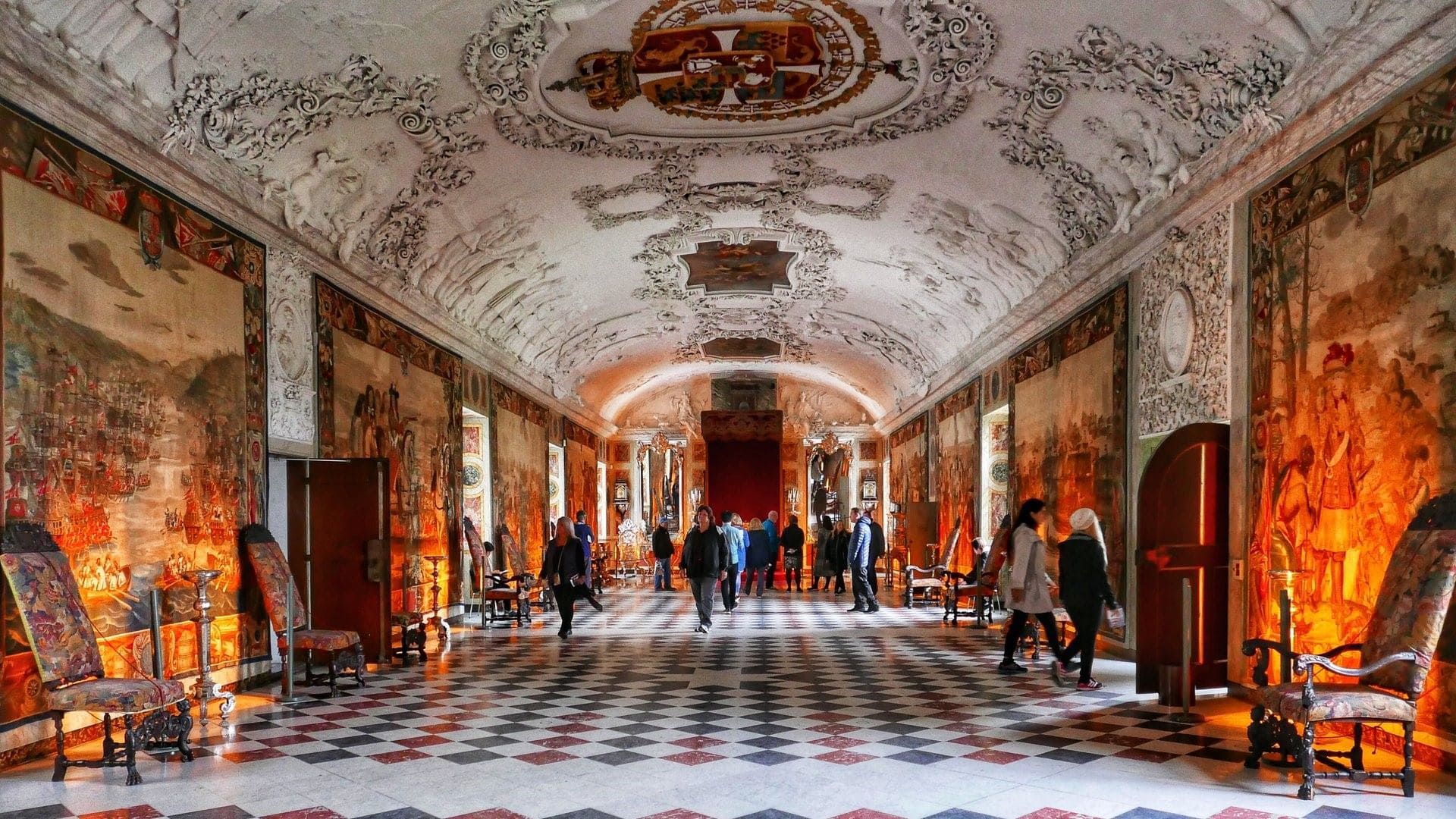
Photo: Lukas Bukoven
King Christian IV, renowned for his ambitious building projects, commissioned Rosenborg Castle as a pleasure palace. Over the centuries, it has served various purposes, including as a royal residence and later as a repository for the Danish crown jewels. The castle’s rich history is evident in its well-preserved interiors and the extensive collection of royal artifacts it houses.
A Glimpse into History: The Origins of Rosenborg Castle
Rosenborg Castle stands as one of Denmark’s most treasured landmarks, offering a deep dive into the nation’s royal history. Built between 1606 and 1634 under the rule of King Christian IV, the castle was originally conceived as a summer retreat before evolving into a prominent royal residence. Its distinct Dutch Renaissance architecture, characterized by red-brick walls and elegant sandstone detailing, reflects the grandeur of the early 17th century.
Although Rosenborg ceased to be a royal residence around 1710, it remained in use for emergencies. Notably, King Christian VII and the royal family sought refuge in the castle during the British bombardment of Copenhagen in 1801. Today, it serves as a museum showcasing centuries of Danish royal heritage.
Architectural Splendor and Royal Collections
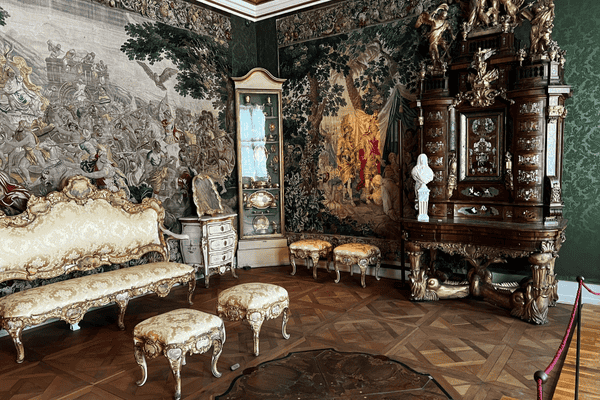
Photo: Ed Berrevoets
Rosenborg Castle’s interiors remain remarkably well-preserved. They offer an authentic glimpse into royal life. The Knights’ Hall, adorned with tapestries depicting Denmark’s battles, features the coronation thrones guarded by three life-sized silver lions. Each chamber boasts meticulously crafted furnishings, reflecting the monarchy’s opulence.
Notably, the castle’s basement vaults house the crown jewels, exquisite sets of diamonds, rubies, pearls, and emeralds, among the finest in the world.
Architectural Marvels: Highlights of Rosenborg Castle
Rosenborg Castle is a masterpiece of Dutch Renaissance design, featuring symmetrical facades, towering spires, and intricate ornamentation. While the exterior is an architectural gem, the interior holds even greater treasures.
The Long Hall (Knight’s Hall)
One of the most breathtaking rooms in the castle, the Long Hall was completed in 1624 and originally served as a ballroom. Over time, it became the setting for royal receptions and banquets. The hall’s elaborate stucco ceiling bears the Danish Coat of Arms, surrounded by intricate motifs. At the far end of the hall, visitors can find the coronation chair guarded by three silver lions, one of the castle’s most iconic features.
The Ornate Towers and Façade
The castle’s distinctive towers, adorned with copper spires, add to its fairytale-like appearance. The symmetry of its design, with its prominent stepped gables and elaborate detailing, makes it one of the finest examples of Renaissance architecture in Denmark.
Exploring the Castle Grounds
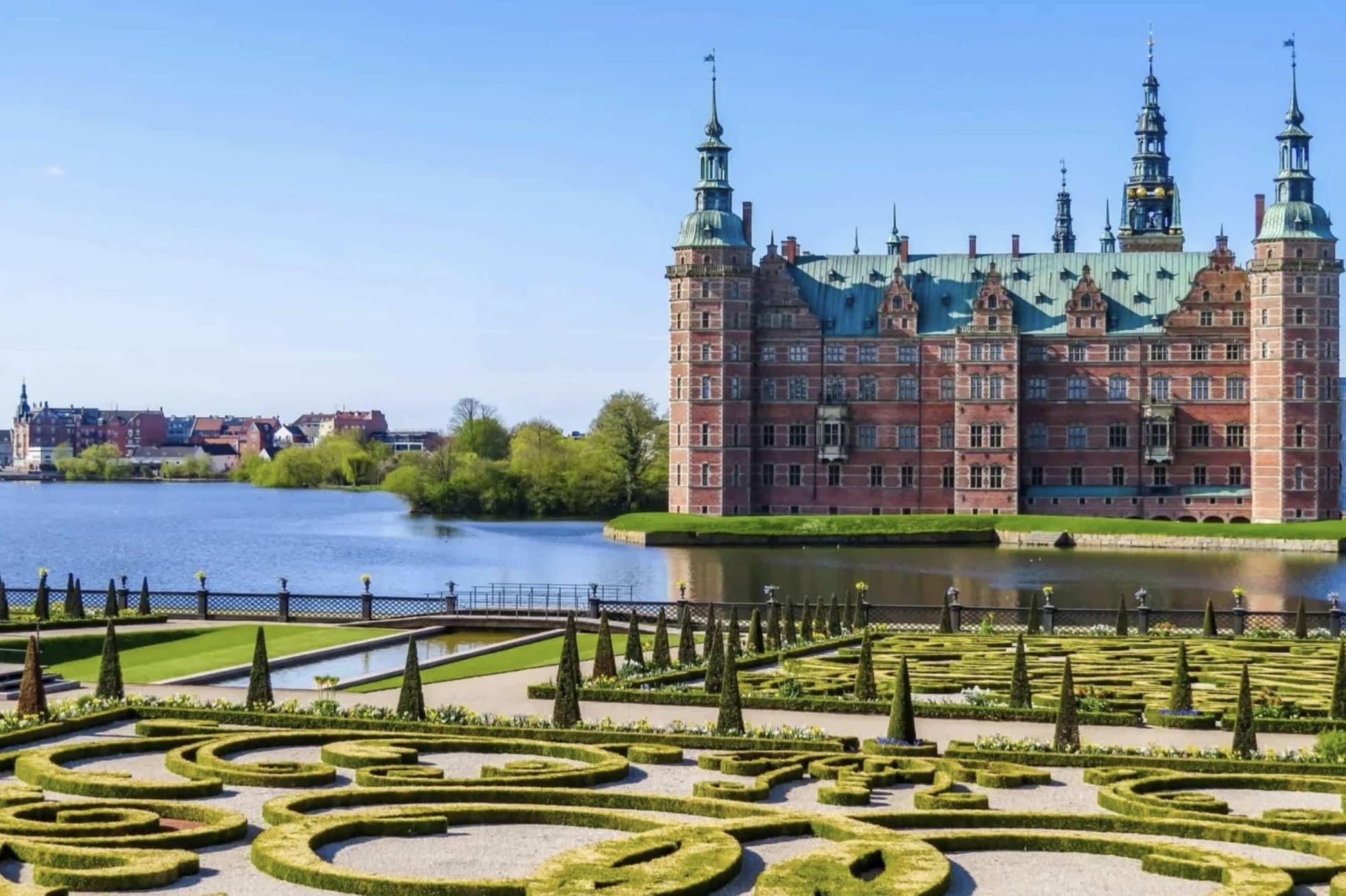
Photo: My Guide Copenhagen
Beyond its stunning architecture, Rosenborg Castle sits within the King’s Garden (Kongens Have) Denmark’s oldest royal garden. With its manicured lawns, blooming flowers, and historical statues, this serene park offers a peaceful retreat for both locals and tourists.
Royal Treasures: What’s Inside the Castle?
Beyond its stunning architecture, Rosenborg Castle is home to an extensive collection of royal artifacts that offer a glimpse into the lives of Denmark’s past monarchs.
The Danish Crown Jewels and Regalia
The castle’s basement houses the Royal Treasury, where visitors can marvel at the Danish Crown Jewels. These include dazzling crowns, scepters, and orbs, adorned with diamonds, sapphires, and emeralds. The regalia, still used for ceremonial occasions, remain among Denmark’s most prized possessions.
Historic Artifacts and Royal Portraits
Rosenborg Castle boasts an impressive collection of historical paintings, furniture, and personal belongings of Danish monarchs. From elaborate tapestries to intricately carved thrones, each piece tells a story of the Danish royal family’s legacy.
The King’s Garden: A Royal Escape in the Heart of Copenhagen
Surrounding the castle is the King’s Garden (Kongens Have), the oldest royal garden in Denmark. Established in the early 1600s by King Christian IV, it was originally designed as a private retreat for the royal family. Today, the meticulously maintained green space serves as a public park, drawing locals and tourists alike.
What to See in the Garden
• Renaissance-Inspired Landscaping: With its well-manicured lawns, tree-lined pathways, and intricate flower arrangements, the King’s Garden offers a picturesque setting for a leisurely stroll.
• The Statue of Hans Christian Andersen: A nod to Denmark’s literary heritage, this statue commemorates the famed author of fairytales such as The Little Mermaid and The Ugly Duckling.
• Seasonal Blooms and Events: The garden is at its most vibrant during the spring and summer months, hosting art exhibitions, concerts, and cultural events.
Whether you’re admiring the castle from a distance or enjoying a peaceful moment on a garden bench, the King’s Garden is an unmissable part of the Rosenborg experience.
Visitor Information
Rosenborg Castle is open to the public year-round, with extended hours during the summer months. Visitors can explore the castle’s rooms, gardens, and exhibitions, including the Treasury, which houses the crown jewels. Audio guides are available in multiple languages, enhancing the experience by providing in-depth historical context. The castle is conveniently located in central Copenhagen, and easily accessible by public transportation, including the Metro and buses. For more information visit the official website for opening hours.
Location: Øster Voldgade 4A, 1350 Copenhagen, Denmark
Opening Hours: The castle is generally open from 10:00 AM to 5:00 PM. Hours may vary during winter months and holidays.
Admission Fees:
• Adults: 130 DKK
• Children under 18: Free
• Students and seniors: Discounts available
Guided Tours: Official guided tours are available for those looking to explore the castle’s history in more depth.
Tickets can be purchased online or at the entrance, but it is highly recommended to book in advance, especially during peak tourist seasons.
Planning Your Visit
For those planning a visit, check the official website for the latest information on opening hours, ticket prices, and any special events or exhibitions. The museum also offers combined tickets for multiple attractions. It provides a cost-effective way to explore Copenhagen’s rich cultural heritage. For more information visit the official website for ticket prices.
Conclusion
Rosenborg Castle is more than a beautiful piece of architecture, it’s Denmark’s royal vault, an immersive time machine that takes you straight into the heart of the country’s history. It’s where the weight of centuries meets the sparkle of diamonds, and where each room whispers secrets of the past.
Whether you’re admiring the breathtaking Knight’s Hall, standing inches from the Crown Jewels, or strolling through the King’s Garden on a crisp Copenhagen morning, one thing is certain: Rosenborg leaves an impression. It’s a reminder that history isn’t just found in textbooks, it’s alive, preserved, and waiting to be explored.
So, if you’re in Copenhagen, make time for Rosenborg Castle. Don’t just snap a few photos from the outside and call it a day. Step in. Walk through its halls. Stand where kings once stood. And when you see those silver lions guarding the throne, take a moment to appreciate the sheer drama of it all. Because if there’s one thing Danish royals knew how to do, it was making history look good.
Want to embark on a royal journey of the captivating monuments of the royal Danish family? Plan it with our blog guide.
FAQ
Rosenborg Castle is famous for its connection to Danish royalty and its impressive Renaissance architecture. Built in the early 1600s by King Christian IV, it houses the Danish Crown Jewels and Royal Regalia, making it a significant historical landmark in Denmark.
No one currently lives at Rosenborg Castle. It is a museum open to the public, showcasing royal artifacts, including the Crown Jewels, portraits, and period interiors from Denmark’s past.
Yes, Rosenborg Castle is worth visiting, especially for those interested in history, architecture, and royal treasures. It offers a glimpse into Denmark’s royal heritage, beautifully preserved rooms, and the iconic Treasury, where the Crown Jewels are displayed. The surrounding King’s Garden (Kongens Have) also provides a lovely spot to explore.
Inside Rosenborg Castle, visitors can see the Danish Crown Jewels, the Royal Regalia, historic tapestries, beautifully furnished royal rooms, and a well-preserved collection of artifacts from Denmark’s monarchy. Highlights include the Knights’ Hall with coronation thrones and the Rosenborg Tapestries depicting battles between Denmark and Sweden.
It takes about 1 to 1.5 hours to tour Rosenborg Castle, but if you want to explore the Crown Jewels and the gardens at a leisurely pace, plan for 2 hours.

